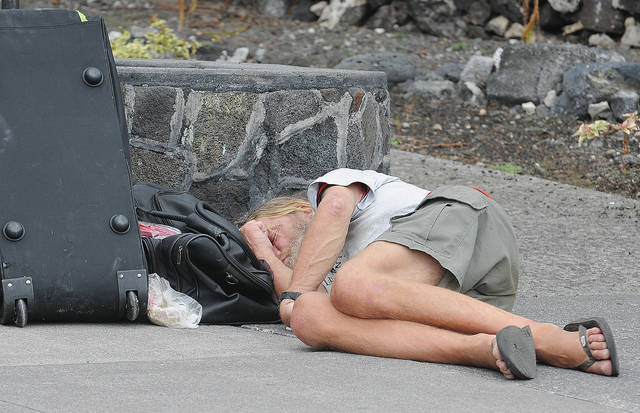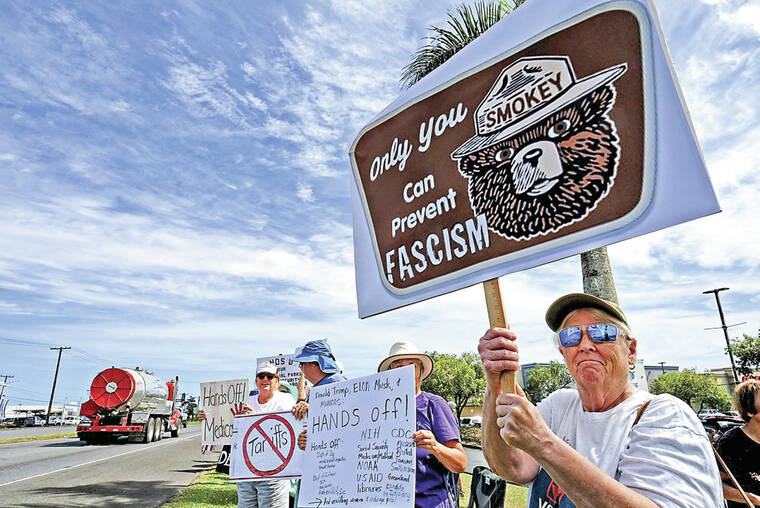KAILUA-KONA — Hawaii County’s plans to address homelessness remain malleable as officials continue to search for the most crucial element of any initiative — funding.
Multiple bills addressing homelessness statewide appear likely to cross over next week from the House to the Senate. When it comes to housing the state’s thousands of unsheltered, two proposals appear to have real traction — so-called ohana zones and homeless villages.
Either notion is feasible for Hawaii Island, explained Lance Niimi, executive assistant to Mayor Harry Kim. But to procure funding, each concept would require the county to implement distinct service parameters at its proposed homeless sites — Village 9 near Kealakehe High School in Kona and an unnamed site in Hilo.
“We have to be adaptable at this point,” Niimi said.
The two programs are similar, both to be established under the state Department of Human Services and dedicating substantial space to set up homeless communities with hygiene facilities, wraparound social services and basic shelter, while also taking into concern transportation and security needs.
Ohana zones, as proposed in House Bill 2281, which cleared its final House committee Friday, would function as transitional housing.
“The endgame would be 90 days … to get them into permanent support housing,” said Rep. John Mizuno, an Oahu Democrat who chairs the House Committee on Health and Human Services and introduced HB 2281.
Homeless villages, on the other hand, would serve as permanent housing. A homeless villages program exclusive to Hawaii Island was proposed in HB 2461, which died earlier this month.
However, a bill proposing a similar program statewide — HB 2014, introduced by Rep. Tom Brower, another Oahu Democrat — moved through the House Committee on Finance on Tuesday.
The Puuhonua homeless villages program, as the statewide initiative would be called, pushes for “a minimum of 8,000 homes” to be developed on state land within two years of the bill’s passage or within two years of the necessary land becoming available, whichever comes last.
The county’s initial notion for Village 9, which was developed after Kim ordered police to evict dozens of homeless illegally residing at Old Kona Airport Park, was that the site would function as permanent housing for at least 100 of West Hawaii’s homeless.
A homeless villages initiative would allow the county to maintain that vision. However, if the state decides it favors ohana zones, the county is willing and prepared to adjust its plans.
“We’re going to ask if we can be considered as a test site for that project,” Niimi said.
Mizuno said language from the homeless villages proposal could eventually be folded into ohana zones legislation to add a permanent housing element or vice versa.
“We’re keeping as many options alive as possible,” he explained.
Email Max Dible at mdible@westhawaiitoday.com.







The root cause of homelessness is over taxation and regulation that has and continues to gravely harm the public in many ways. The under lying problem is the corrupt demo rat agenda that prevents affordable housing being constructed by home owners and sold at affordable prices to the public thus greatly increasing the cost to the point where homes are no longer affordable by working families. Demo rats only make problems then make them worse and never solve the problems they cause because they call for more of their same old failed demo rat policies.